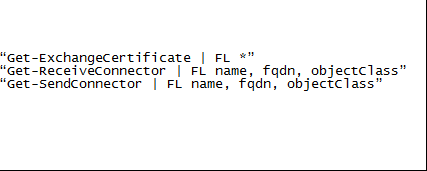Technology up-gradation is on peek nowadays. Many platforms are available for the storage of essential information. Exchange server is one such platform that helps to establish cross communication. However, sometimes users have to face some errors related to the Exchange Server.
Event ID 12014 in Exchange 2013/2010/2007 is one such error that generally arises at the time of the loading of certificate when connection is established between SMTP (Simple Mail Transfer Protocol) and TLS (Transport Layer Security) for authentication. In this section, we will discuss, some reasons behind this error and also, we will learn that how to fix error 12014 exchange 2007?
These are some ultimate mentioned methods to resolve this issue without any difficulty:
Method 1:

Note: “CertificateDomains” value is, basically a sequence of the Subject and Subject Alternative Name fields on the certificate.
Method 2:
Another way to fix error 12014 exchange 2007 is as follows: If the FQDN is not mentioned on the “CertificateDomains” parameter, you have to make a new certificate. You need to also, specify the FQDN of the connector that is returned in this warning message. To create the certificate you can use the “New-ExchangeCertificate” cmdlet.Method 3:
Now, in this case, if you have installed a third-party or custom certificate on the server and it has a matching FQDN, but the created certificate is not enabled for the service of SMTP, then the certificate must be enabled for the SMTP service.Method 4:
Expert Solution to Fix event id 12014 exchange 2013/2010/2007
Users can take help of third party software developed by a well-known company, namely Exchange EDB recovery tool. This software has a very simple interface and can be used technical as well as non technical person. This software has now become one of the most popular tools to fix event ID 12014. The application can recover any corrupted file or deleted mailboxes within Exchange database.
Conclusion: In the above blog, we have discussed the main reasons for event id 12014. We have also, learned some methods to fix error 12014 exchange 2007. Firstly, users have to find out the exact issue that is responsible for this error and then, they can use any method as per the requirement.